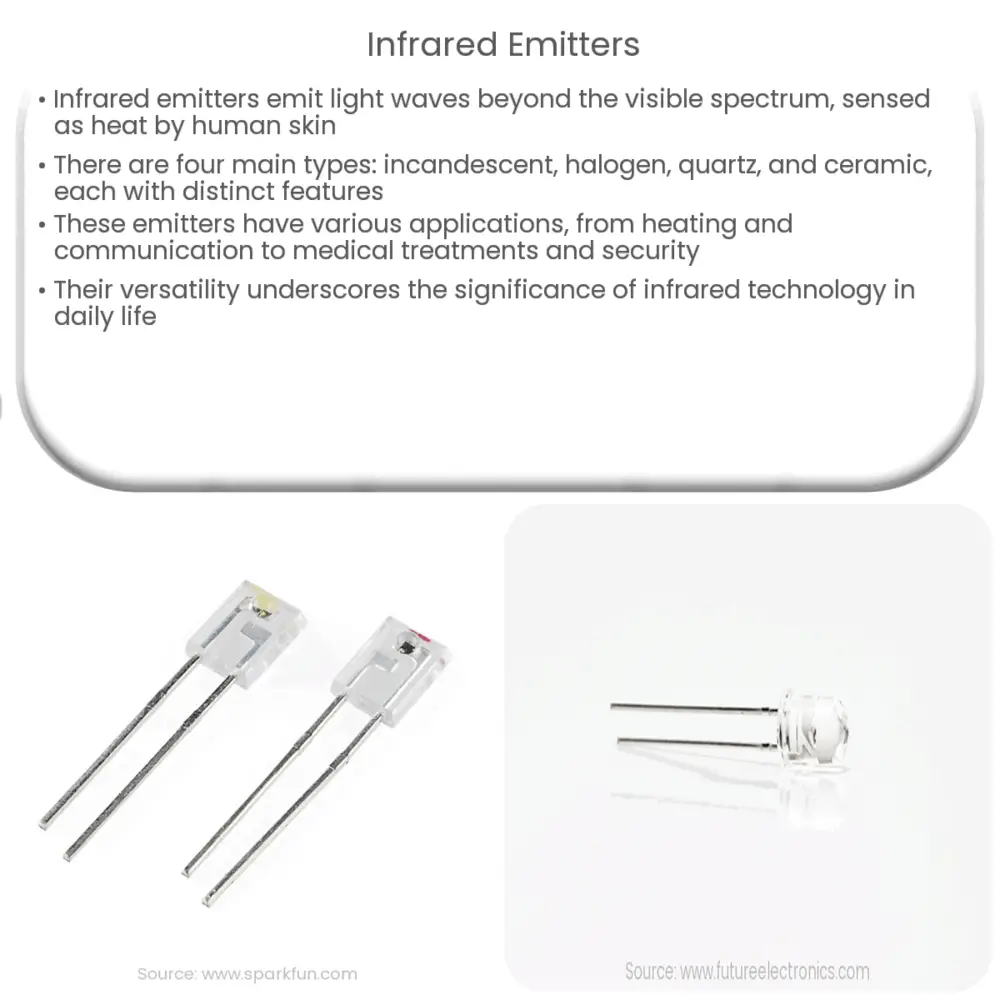Explore the intriguing world of infrared emitters, their types, working principles, and broad applications across various industries.

Introduction to Infrared Emitters
In the world of technology, various forms of energy have distinctive uses, one of which is infrared. Infrared is a type of radiant energy invisible to the human eye but can be felt as heat. A device designed to produce and emit this form of energy is termed an infrared emitter.
Principles of Infrared Emitters
Infrared emitters, as the name implies, emit infrared light waves. This form of electromagnetic radiation sits just beyond the red end of the visible light spectrum, hence the name “infrared”, which means ‘below red’. While infrared light is invisible to the naked eye, it can be sensed as heat, as our skin is sensitive to infrared radiation.
Types of Infrared Emitters
Incandescent, halogen, quartz, and ceramic emitters represent the different types of infrared emitters available in the market, each with unique features and applications.
Incandescent Infrared Emitters
An incandescent infrared emitter functions by heating a tungsten filament, which then emits infrared light. They are generally simple to use, inexpensive, and readily available. However, they are not as energy-efficient as other types of infrared emitters and have a shorter lifespan.
Halogen Infrared Emitters
Halogen infrared emitters operate on a similar principle to incandescent emitters but have an important distinction. They contain a small amount of halogen (like iodine or bromine) inside the bulb. When the lamp is turned on, the heat from the tungsten filament causes the halogen to vaporize and combine with tungsten atoms, creating a halogen cycle. This process helps to extend the life of the lamp and increase its efficiency.
Quartz Infrared Emitters
Quartz infrared emitters are known for their ability to heat quickly. They use a quartz tube that contains a heating element. When electricity is applied, the heating element warms up, and the quartz tube allows the infrared radiation to pass through it. These types of emitters are highly efficient and can reach high temperatures in a very short period.
Ceramic Infrared Emitters
Ceramic infrared emitters function by passing electricity through a ceramic heating element. As the ceramic element heats up, it begins to emit infrared radiation. Ceramic infrared emitters are known for their long lifespan and excellent thermal efficiency. They also provide a very uniform heat output, making them ideal for applications that require consistent heating over a large area.
Applications of Infrared Emitters
Infrared emitters have wide-ranging applications across various industries. Here are some of the common uses:
Conclusion
In conclusion, infrared emitters are a significant part of our everyday life, even though their presence may go unnoticed. These devices, whether they are incandescent, halogen, quartz, or ceramic, have unique properties that make them suitable for specific applications. The utility of infrared emitters extends from simple remote controls to advanced medical therapies, showcasing the power and versatility of this seemingly invisible form of energy. As technology advances, we can anticipate an even wider range of applications that harness the potential of infrared emitters.

